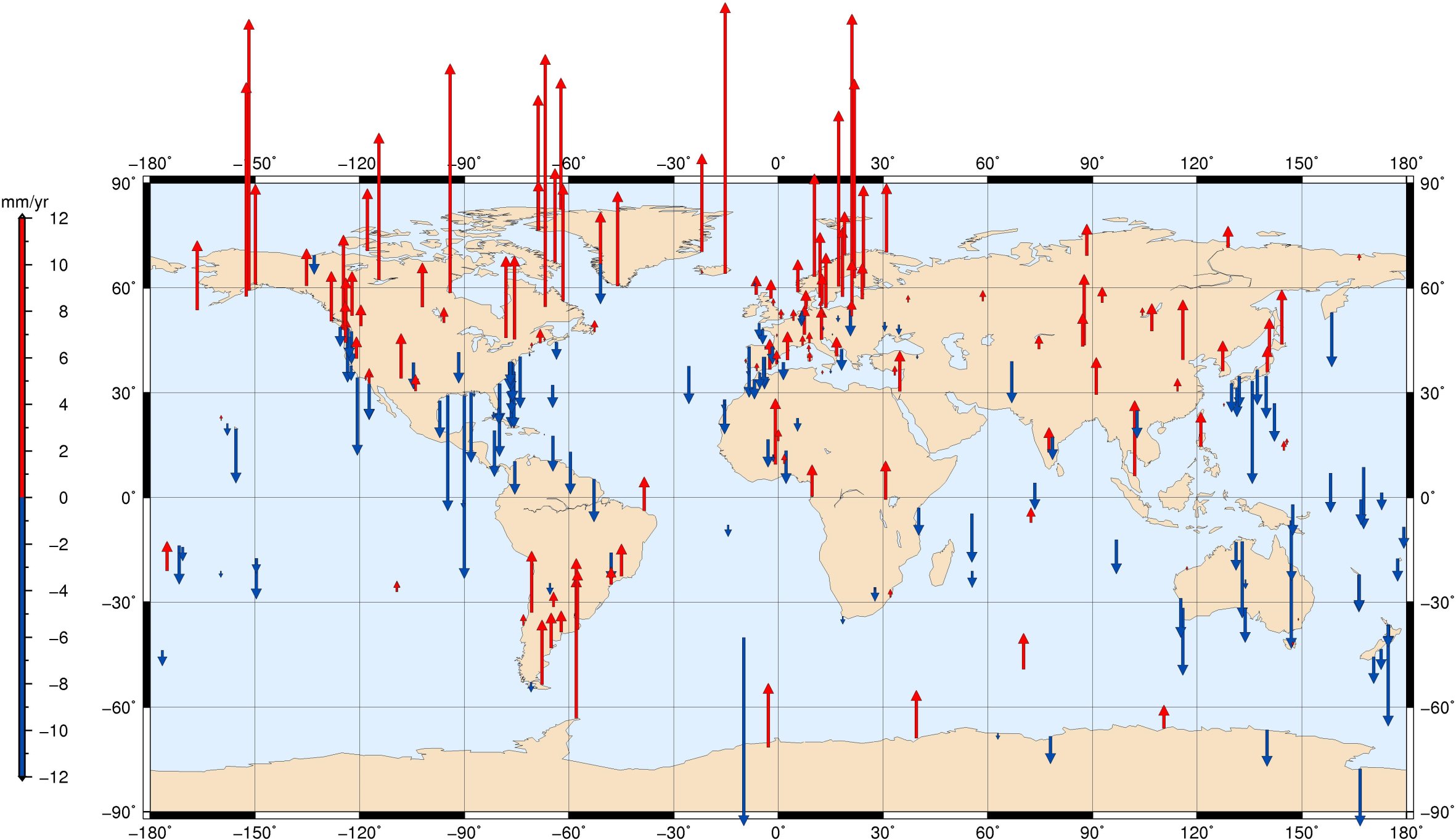
ULR4 solution (2011)
Several GPS solutions have been produced so far by the ULR analysis centre consortium as new analyses strategies were devised (models, parameterization,...). The latest solution, called ULR4, contributed to the IGS first reprocessing campaign. Its vertical velocity field is published in Journal of Geophysical Research. It is expressed in ITRF2005 using 13 years of GPS data.
-
- Main features
Double-differenced ionosphere-free GPS carrier phase observations from a global network of 316 stations were reanalyzed using GAMIT/GLOBK software version 10.34. The dataset covered the period January 1996 to December 2008 and 216 stations out of 316 were co-located with a tide gauge. Station coordinates, satellite orbits, Earth orientation parameters (EOPs), and zenith tropospheric delay parameters every 2 hours, were estimated. Details on the GPS data processing strategy (models, corrections,...) can be found in the IGS-like ULR analysis centre form associated with this solution.
The GPS velocities were obtained in the final step of the analysis which combined the weekly GAMIT/GLOBK global network solutions (station coordinates with full co-variances) from the entire data time span into a long-term solution using CATREF software. This long-term solution (ULR4) was aligned to ITRF2005 using minimal constraints over a selected set of IGS Reference Frame stations. A detailed description can be found in
Santamaria-Gomez A., M-N. Bouin, Wöppelmann (2012) : Improved GPS data analysis strategy for tide gauge benchmark monitoring. International Association of Geodesy Symposia 136, Geodesy for Planet Earth, pp. 11-18, doi:10.1007/978-3-642-20338-1_2.
-
- Solution data files
The ULR4 vertical velocity field itself is published in
Santamaria-Gomez A., M-N. Bouin, X. Collilieux, Wöppelmann (2011) : Correlated Errors in GPS Position Time Series : Implications for Velocity Estimates. Journal of Geophysical Research, 116, B01405, doi:10.1029/2010JB007701.
Please cite this paper if you find the results useful.
To assign more realistic uncertainties on the GPS velocities, the noise content in the position time series was examined by the maximum likelihood estimation (MLE) technique using CATS software. Many stochastic models were investigated. Time series were detrended and deseasoned (annual and semi-annual cycles) at the CATREF stage. Details on the GPS velocity uncertainty assessment can be found in the above-mentioned paper.
– The ulr4_Vertical-Velocities_Table.txt provides the vertical GPS velocities and uncertainties for the 275 stations fulfilling the criteria of 2.5 years of minimum length without discontinuities and more than 70% of valid data in the time series.
– The ulr4_detrend.zip file contains individual station data files of weekly residual position time series in ITRF2005 with respect to the linear long-term combined solution at the central reference epoch. These residuals (detrended and deseasoned) are expressed in metres in the local frame (North, East, and Up). The long-term position and velocity are provided in the header of each file. The ULR4_discontinuities_Table.txt file provides the offsets that were estimated.
– The ulr4.kmz file shows a Google Earth presentation of the above weekly data files by cliking on a station symbol. The associated IGS-like sitelog can be accessed too, as well as a view of the position time series in the vertical.
– The long-term solution ULR4 in SINEX format (47 Mo) can be downloaded too. However, we recommend its use only to those familiar with SINEX files, and having a good geodetic background and experience.















